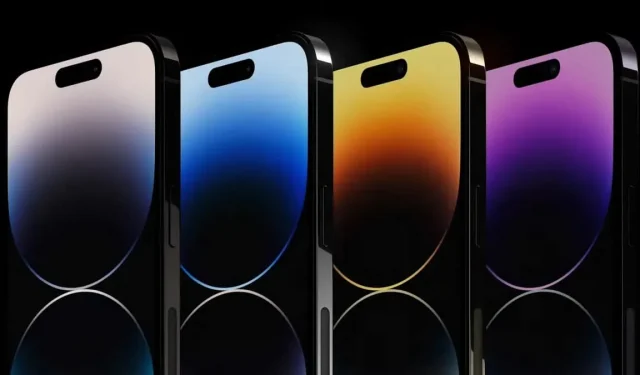Always-on display and iPhone power consumption is a complicated story

The iPhone 14 Pro has an Always On screen. Practical, but significantly affects the autonomy of the device.
The Always On feature on the iPhone 14 Pro and 14 Pro Max screen offers a good way to display certain information on your smartphone without having to interact with it. However, Apple’s initial design choice was rather odd, with the 14 Pro dimming the wallpaper as well as the clock and notifications by default, which is quite confusing and can eat up battery.
iPhone 14 Pro has an Always On screen.
Apple “fixed”the issue with iOS 16.2 by giving users the option to turn off their wallpapers on the Always On screen. Since the iPhone 14 Pro has an OLED screen, it may turn off unused pixels. Then you might think that disabling the wallpaper for the always-on screen, leaving most of the surface completely black, would save a lot of battery life.
Well, apparently not. PhoneBuff recently ran a big test to compare the battery performance of three iPhone 14 Pro Max: one with the default always-on screen, wallpaper on, one with text only, and the last one with always-on screen off. PhoneBuff also reset the iPhone so the three didn’t have an app or iCloud account, put them in Airplane Mode, and placed their lab with “normal”and fixed ambient lighting.
After 24 hours, an iPhone with always-on screen and wallpaper is still at 80%. The one with text only, 84%. After a whole day, wallpapers consumed only 4%, although they took up the entire screen.
Convenient, but significantly affects the autonomy of the device
This minor impact on battery levels is certainly due to Apple hardware and software. iPhone 14 Pro screens have a variable refresh rate, so they can change that variable as needed. Older iPhones had a 60Hz refresh rate, so the screen refreshed 60 times per second. The 14 Pro can boost up to 120Hz when needed and down to 1Hz when idle. This is what makes the always-on screen very effective. With a screen that only updates once per second, with the efficiency of the A16 Bionic chip, you can display a full screen image without (too much) impact on battery life.
Of course, this test was carried out in a laboratory. In everyday life, the consequences will be different. And since PhoneBuff used an iPhone 14 Pro Max for the test, you can also see a bigger battery drop on the iPhone 14 Pro. PhoneBuff also had to keep waking phones up during the test, as the Always On screen turned off completely after nearly an hour of inactivity. In other words, you’ll probably conserve your battery better if you keep your phone in your pocket or on your desk.
If you just want to improve your 14 Pro’s battery life, turn off the always-on display entirely. Without it, the battery was still at 100% after 24 hours. But again, the test was done in a lab, with no cellular or Wi-Fi connection, no background app, etc. Either way, it shows that not using the Always On screen saves battery life. To do this, go to Settings > Brightness & Display > Always On.
PhoneBuff iPhone 14 Pro: Always On Screen Test PhoneBuff / YouTube
Leave a Reply